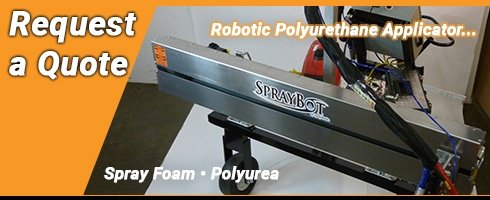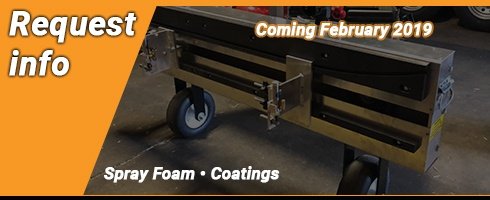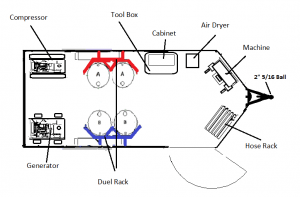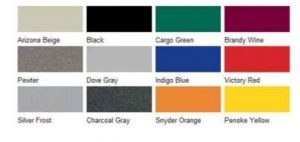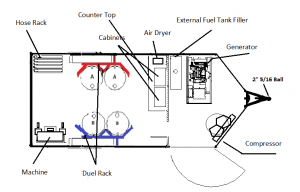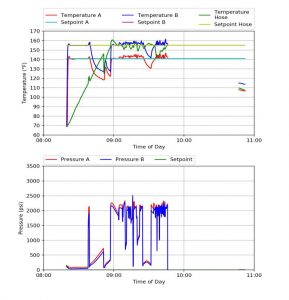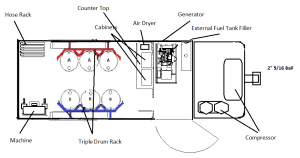A common question we get at SprayWorks is “which spray foam material manufacturer is the best?” The answer to this is less about the manufacturer and more about applying the correct ratio of materials, ensuring good heat, and proper pressure. The real question that needs to be asked is, “what’s required to process the foam correctly?” When purchasing a new spray foam insulation there are several things you should consider, but it starts with knowing the manufacturer’s recommendations. After all, new material can impact your spray pattern, selection of gun tip and rate of application. Understanding these things upfront can save you a lot of time and trouble.
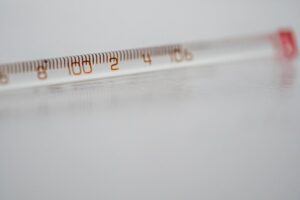
Spray Temperature and Pressures
Chemical reactions take place at different rates between formulations and manufactures. Most manufacturers of 2lb closed cell foams generally recommend materials be processed at 120*F with 1,000 psi, but reaction speeds still vary depending on the particular product, environmental conditions and equipment performance. Let’s say you are using a closed-cell foam and spraying with an air purge gun. When the trigger is pulled, the two chemicals mix as they are forced out of the spray tip. Once the trigger is disengaged the material flow shuts off while air begins to blow through the mixing chamber and tip. However, we often find ourselves having to clear the tip with a drill bit. Depending on the reaction rate of the chemicals and the ability to cling to the inside of the tip, the air may or may not be adequate enough resulting in frequent plugging. In general, open-cell foams are slower in their initial reaction and lower in viscosity than the closed-cell variations which allows the air to better purge the mixing chamber and tip.
Heating Your Material
Maintaining a good temperature is also crucial to efficiently process your material, and that starts with the liquids in drum. Make sure your rig is insulated to help maintain a warm environment, both prior to and during application. Drum heaters help with this by allowing a lower ambient environment in your rig while still maintaining recommended temperatures. If you are spraying multiple sets, make sure you give yourself enough lead to the warm the next set. Failure to do this may cost valuable time (1 to 1 ½ hrs to heat a drum) and cause unexpected issues. Materials may be formulated to perform better under cooler or warmer conditions but material containers will still have to be stored in a warm environment and brought to the correct temperature prior to application. Remember that those requirements will change with the conditions and seasons. For instance, winter grade material is faster reacting than summer grade. As the season changes be familiar with manufactures recommendations so you know when to make adjustments, or change material. Having a good understanding of the equipment and material provides a solid foundation to increase production rates, lower material costs, provide more reliable profit calculations and alleviate frustration.
Finding the Right Combination
If you feel like you are making all the right adjustments and still having trouble, just remember the basics. First, check the manufacturer’s recommendations against current conditions and remember to maintain a good spray pattern while making changes. Be sure to allow the chemical to get from the drum to the spray gun before determining if a change was effective. Assuming that everything is correct with your equipment, make sure there is adequate air pressure to your spray gun and lowering the temperature slightly can help delay the reaction time and minimize clogging. If you find yourself continually struggling with a certain material then you may want to find another product that is more user-friendly. Some closed-cell spray foams are more forgiving than others and allow greater temperature variance. Although these adjustments can cost you some time and material in the short term, the long-term benefits of knowing your product and making concise adjustments are well worth it. For further discussion feel free to contact our experts.

